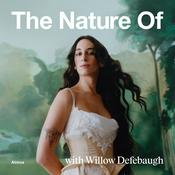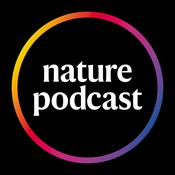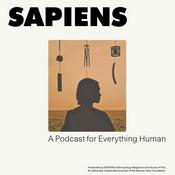38 episodios

Historia de la doble hélice y la fotografía que lo cambió todo
30/12/2025 | 45 min
En este episodio nos metemos de lleno en el chisme científico detrás de la doble hélice: desde lo que se sabía del ADN antes de los años 50, pasando por los experimentos que demostraron que ahí estaba la información genética, hasta la carrera contrarreloj por descifrar su estructura.Hablamos de Watson y Crick, de Wilkins, y sobre todo de Rosalind Franklin, la científica detrás de la famosa Fotografía 51.REFERENCIAS What Rosalind Franklin truly contributed to the discovery of DNA’s structure: https://www.nature.com/articles/d41586-023-01313-5 50 años del descubrimiento: https://www.medigraphic.com/pdfs/abc/bc-2003/bc033j.pdf The landmark ideas of Watson and Crick relied heavily on the work of other scientists. What did the duo actually discover? https://www.nature.com/scitable/topicpage/discovery-of-dna-structure-and-function-watson-397/The Discovery of the Double Helix, 1951-1953: https://profiles.nlm.nih.gov/spotlight/sc/feature/doublehelixThe papers of Rosalind Franklin: https://wellcomecollection.org/works/ka25u4ftEn busca de la estructura del ADN: https://www.researchgate.net/publication/28208801_En_busca_de_la_estructura_del_ADN

Bichos: la ciencia detrás de una aventura en miniatura
28/11/2025 | 1 h
En este episodio exploramos la biodiversidad detrás de la película de Disney Pixar, Bichos: Una aventura en miniatura (A Bug’s Life). Analizamos a las especies que inspiraron a los personajes hormigas, saltamontes, mariquitas, mantis, viudas negras y más. Revisamos qué comportamientos son biológicamente posibles y cuáles son pura ficción animada.Referencias:Buschinger, A. (2009): Social parasitism among ants: a review (Hymenoptera: Formicidae). Myrmecological News, Vol. 12, pp. 219-235 https://myrmecologicalnews.org/cms/index.php?option=com_download&view=download&filename=volume12/mn12_219-235_printable.pdf&format=rawIvens, A. B. F., & Kronauer, D. J. C. (2022). Aphid-farming ants. Current Biology, 32(15), R813–R817. https://doi.org/10.1016/j.cub.2022.06.072P. D’Ettorre, P. & Heinze, J. (2001): Sociobiology of slave-making ants. acta ethologica Vol. 3, pp. 67–82 https://link.springer.com/article/10.1007/s102110100038Pizarro-Ortiz, C. y Ortíz-Zárate, R. (2025) Tú a lo tuyo y yo a lo mío, el increíble sistema de castas de las hormigas. Boletín de la Asociación Mexicana de Sistemática de Artrópodos 9(1) https://www.researchgate.net/publication/388678498_Tu_a_lo_tuyo_y_yo_a_lo_mio_el_increible_sistema_de_castas_de_las_hormigasRatcliffe, B. C. (2007). A remarkable new species of Megaceras from Peru (Scarabaeidae: Dynastinae: Oryctini). The “Dim Effect”: Nature mimicking art. The Coleopterists Bulletin, 61(3), 463–467. https://doi.org/10.1649/0010-065X(2007)61\\[463:ARNSOM]2.0.CO;2The Museum of Modern Art. (2010, 3 de diciembre). The Leaf Bridge. A Bug’s Life, 1998 [Audio]. En Pixar: 20 Years of Animation. MoMA. https://www.moma.org/audio/playlist/192/2578Uno de los saltamones más dañinos es la “langosta del desierto” (Schitocerca gregaria) https://youtu.be/2x5eOBJ37iE?si=7nRB2k--5hffm8P-

Plantas invasoras: mestizaje planetario o invasiones biológicas
04/11/2025 | 38 min
Las plantas viajan, se mezclan y conquistan nuevos territorios. Pero… ¿es eso algo natural o una amenaza silenciosa para los ecosistemas? En este episodio hablamos con Daniela Marín, bióloga y magíster en restauración ecológica, sobre el papel de algunas especies de plantas invasoras en un planeta cada vez más conectado.Libro recomendado: Especies vagabundas ¿Una amenaza? de Gilles Clément,Francis Hallé,François Letourneux.**Corrección importante: el café es de origen africano***Les dejamos algunas referencias que nos recomendó nuestra invitada:-Plan nacional para la prevención, el control y manejo de las especies introducidas, trasplantadas e invasoras: https://www.minambiente.gov.co/wp-content/uploads/2021/10/PN-Prevencio%CC%81n-el-control-y-Manejo-de-las-especies-introducidas-invasoras.pdf -Plan político normativo de la biodiversidad (Amenazadas e invasoras): https://www.minambiente.gov.co/direccion-de-bosques-biodiversidad-y-servicios-ecosistemicos/marco-politico-y-normativo-de-la-biodiversidad-amenazadas-e-invasoras/-Especie de árbol invasora en Colombia (Bellucia pentamera): https://smujo.id/biodiv/article/view/10934/5842 -El Ojo de poeta (Thunbergia alata): https://abm.ojs.inecol.mx/index.php/abm/article/view/1870-Especies invasoras desde una mirada internacional: https://www.ipbes.net/ias

Ponzoñosas y fascinantes: Venenos de serpientes
17/10/2025 | 50 min
Como ya es tradición, este año traemos nuestro especial de Halloween. Y esta vez, la protagonista es un símbolo de miedo, poder y misterio: la serpiente. En este episodio exploramos su arma más letal , el veneno; desde los mitos más antiguos hasta la ciencia moderna. Hablaremos de historias que mezclan terror y fascinación, de cómo los venenos se convirtieron en herramientas médicas, y de los efectos bioquímicos que esconden estas criaturas ponzoñosas.REFERENCIAS:Alagón Cano, A. (s.f.). Toxinología del veneno de las serpientes. Instituto de Biotecnología, Universidad Nacional Autónoma de México. Boletín Electrónico de la Red Latinoamericana de Ciencias Toxicológicas (BEB), 14(4), 134–139. https://redtox.org/sites/default/files/toxiblog/descargables/toxinologia-del-veneno-de-serpientes_1.pdfAngel Mejía, S. R. (2017). Serpientes: Mitos y realidades. Editorial CES, Universidad CES, MedellínBedraoui, A., Suntravat, M., El Mejjad, S., Enezari, S., Oukkache, N., Sanchez, E. E., Galan, J. A., El Fatimy, R. A., Daouda, T. 2024. Therapeutic potential of snake venom: Toxin distribution and opportunities in deep learning for novel drug discovery. Medicine in Drug Discovery, 21: 100175Charitos IAGagliano-Candela RSantacroce LBottalico L (2022) Venoms and Poisonings during the centuries: a narrative reviewGodínez, Gloria Luz. 2017. Lloronas, madres y fantasmas: necrobarroco en México. Revista interdisciplinaria de estudios de género de El Colegio de México, 3: 129-163.Guida Navarro, A. 2021. La anaconda como serpiente-canoa: mito y chamanismo en la Amazonía Oriental, Brasil. Boletín de Antropología, Universidad de Antioquia, 36: 164-186.https://www.redalyc.org/journal/557/55768425010/html/Gutiérrez, J. M. Comprendiendo los venenos de serpientes: 50 años de investigaciones en América Latina. Revista de biología. Tropical, 50: 2Holford, M., Daly, M., King, G. F., Norton, R. S. 2018. Venoms to the rescue - Insights into the evolutionary biology of venoms are leading to therapeutic advances, 361: 842-844. https://www.science.org/doi/10.1126/science.aau7761#core-collateral-purchase-accessOliveira, A. L., Viegas, M. F., da Silva, S. L., & et al. (2022). The chemistry of snake venom and its medicinal potential. Nature Reviews Chemistry, 6, 451–469. https://doi.org/10.1038/s41570-022-00393-7Osipov, A., Yuri Utkin, Y. 2023. What Are the Neurotoxins in Hemotoxic Snake Venoms? Int J Mol Sci, 3:2919. doi: 10.3390/ijms24032919.Osterloff, E., Lotzof, K. Mastering venom. https://www.nhm.ac.uk/discover/mastering-venom.htmlhttps://www.sciencedirect.com/topics/medicine-and-dentistry/snake-venom#:~:text=Snake venom is defined as,as well as environmental factors.Utkin, Y. N. (2015). Animal venom studies: Current benefits and future developments. World Journal of Biological Chemistry, 6(2), 28–33. https://pmc.ncbi.nlm.nih.gov/articles/PMC4436903/

Biocomunicación: Mensajes ocultos
30/9/2025 | 48 min
Este es el ultimo episodio de nuestra miniserie sobre biocomunicación. Aquí hablamos un poco sobre esa comunicación invisible, una de las más antiguas de la evolución y la que usan la mayoría de organismos vivos en este planeta: la comunicación química. REFERENCIAS-El-Sayed, A., Byers, J., Suckling, D. 2016. Pollinator-prey conflicts in carnivorous plants: When flower and trap properties mean life or death. Scientific Reports. https://www.nature.com/articles/srep21065?error=cookies_not_supported&code=c466f3c2-7c40-4c43-baad-a44cd3a29eb9#Sec11-Karst, J., Jones, M. D., & Hoeksema, J. D. (2023). Positive citation bias and overinterpreted results lead to misinformation on common mycorrhizal networks in forests. Nature Ecology & Evolution, 7, 501–511. https://doi.org/10.1038/s41559-023-01986-1-Keller-Costa, T., Canário, A. V. M., Hubbard, P. C. 2015. Chemical communication in cichlids: A mini-review. General and Comparative Endocrinology 64-74. https://www.sciencedirect.com/science/article/abs/pii/S0016648015000039-Lassance, J. M., Löfstedt, C. 2013. Chemical Communication: A Jewel Sheds Light on Signal Evolution. Current Biology 346-348. https://www.sciencedirect.com/science/article/pii/S0960982213003576-Ortegón, S. R., Carlos, O., Robert-Hazotte, A., Lelgouarch, A., Desoche, C., Kawabata Duncan, K., Tagai, K., Fournel, A., Bensafi, M., Race, B., Ferdenzi, C. 2023. Investigating the human chemical communication of positive emotions using a virtual reality-based mood induction. Physiology & Behavior. https://www.sciencedirect.com/science/article/abs/pii/S0031938423000756-Roberts, S. A., Simpson, D. M., Armstrong, S. D., Davidson, A. J., Robertson, D. H., McLean, L., Beynon, R. J., & Hurst, J. L. (2010). Darcin: a male pheromone that stimulates female memory and sexual attraction to an individual male’s odour. BMC Biology, 8, Article 75. https://doi.org/10.1186/1741-7007-8-75-Simard, S. W., Perry, D. A., Jones, M. D., Myrold, D. D., Durall, D. M., & Molina, R. (1997). Net transfer of C between ectomycorrhizal tree species in the field. Nature, 388(6642), 579–582. https://doi.org/10.1038/41557-Simard, S. (2021). Finding the mother tree: Discovering the wisdom of the forest. Alfred A. Knopf.-W. C. Agosta, Comunicación química. El lenguaje de las feromonas . Nueva York: Scientific American Library, 1992
Más podcasts de Ciencias
Podcasts a la moda de Ciencias
Acerca de Otro Podcast de Ciencia
Escucha Otro Podcast de Ciencia, Aparici en Órbita y muchos más podcasts de todo el mundo con la aplicación de radio.net

Descarga la app gratuita: radio.net
- Añadir radios y podcasts a favoritos
- Transmisión por Wi-Fi y Bluetooth
- Carplay & Android Auto compatible
- Muchas otras funciones de la app
Descarga la app gratuita: radio.net
- Añadir radios y podcasts a favoritos
- Transmisión por Wi-Fi y Bluetooth
- Carplay & Android Auto compatible
- Muchas otras funciones de la app


Otro Podcast de Ciencia
Descarga la app,
Escucha.
































